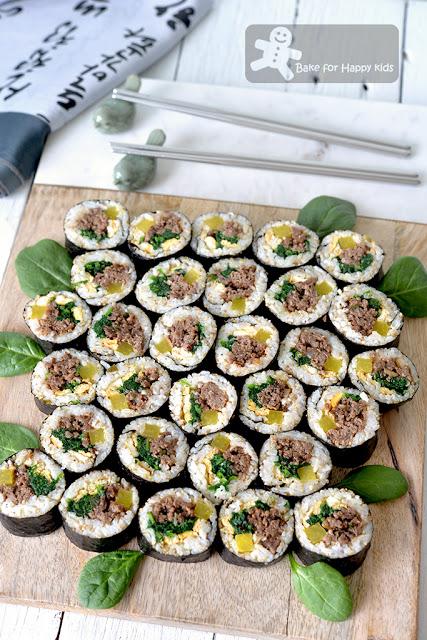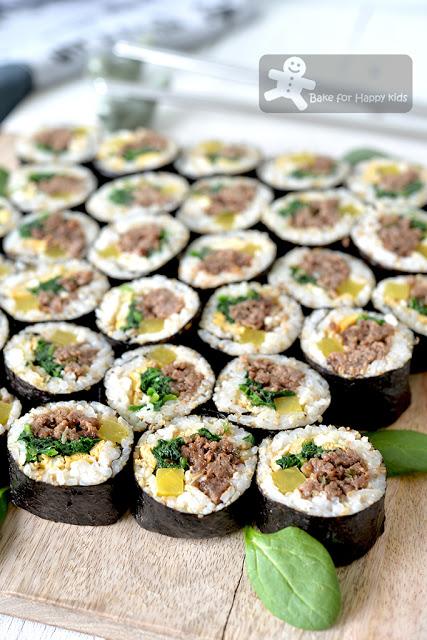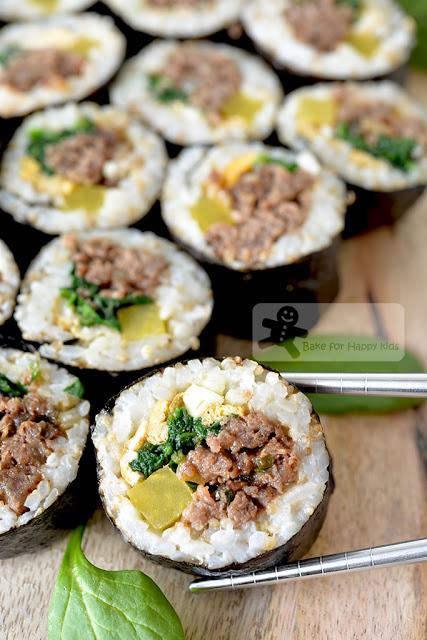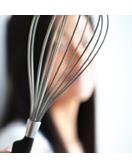An Australian health survey that was done in 2014 has reported 28% of Australian adults are obese and 63% adults are overweight or obese. (Source: Wikipedia)
Straits Times Singapore (2018) has reported that 36% Singaporeans adults and 13% children are overweight.
I'm a strong believer of "we are what we eat". Are you?
What are the healthy food? Most of us will say that healthy foods are generally foods that are low low low in anything that is unhealthy... like fat, cholesterol, trans fat, carbs, sugar, salt and calories. However, can you imagine eating something that has no fat, cholesterol, trans fat, carbs, sugar, salt and calories? Ewww... I hate cardboard foods!
Some of us even think that any foods with the words "diet", "gluten-free", "whole grains", "high GI" including the "heart foundation" ticks are healthy. Some of us will just simply give up and eat whatever they want.
The truth is I'm one of the everybody who wants to be healthy and one of the nobody who likes tasteless food. LOL! And I think that most of us are confused with too many diets, food myths and misleading food labels. We just don't know how to eat well and be healthy!
For me, being healthy is to eat DELICIOUS nutritious food!
Delicious food that is cooked with good variety of nutrition such as whole grains, proteins, dietary fibers, vitamins, minerals, the good fats and even carbs and sugar!
Delicious food that is satisfying and fulfilling so that you wouldn't want to eat more than you need. Eating more than what we need is mainly the reason why we are growing fatter and fatter. Agree?
After my recent Singapore trip, I have learned that most trendy organic health food including the ingredients such as chia seeds and quinoa are very expensive in Singapore. And most people including most of my family members don't really know how to assemble all the healthy ingredients together to create a delicious meal.
As a health-conscious foodie, I'm constantly inspired with many food ideas and love to create interesting delicious healthy food for my family.
So today, I'm showing you how I made my lean beef bulgogi gimbap for my family. They are not entirely diet, gluten-free, whole grains, high GI, low carb, paleo-diet-friendly, fat-free and sugar-free. They are healthy because they are cooked with good variety of nutrition such as whole grains, proteins, dietary fibers, vitamins, minerals with a balanced amount of good fats, carbs and sugar! Most importantly, they are very appetising and delicious!!!

My Healthy and Delicious Lean Beef Bulgogi Gimbap / Kimbap / 김밥
Gimbap also known as Kimbap is the Korean version of sushi rolls. Unlike the Japanese sushi which is commonly made with raw fish, the Korean gimbap is typically made cooked or preserved ingredients like canned tuna, kimchi, grilled bulgogi and ham and cheese. In addition, the Japanese sushi rice is typical seasoned with vinegar and sugar whereas the Korean gimbap rice is seasoned with sesame oil and salt.
Unlike the typical Korean gimbap, my healthy version is made of 1) sushi rice that is mixed with quinoa and 2) lean bulgogi beef.
The Rice
Notice that I have used a mixture of white sushi rice and quinoa to make my gimbap? Why didn't I use all brown rice or all quinoa?
I know I know... There are many many many recipes at the internet showing that we can use all brown rice or all quinoa to replace white sushi rice for making sushi but it is not exactly easy as they were written or shown. You have to believe me because I have tried all of these options and non of these replacements works well enough for me. Honestly speaking, the sushi that I have made with all brown rice and all quinoa are actually NOT so delicious and can fall apart easily...
Compare to the white rice, brown rice require more water and also time to cook. And no matter how much more I have cooked and rested the rice, it will never become sticky enough like the sushi rice or unless it is cooked in a pressure cooker!
Don't you think that it is really a hassle to cook just a small amount of 250g brown rice in a pressure cooker? Therefore, I have been enhancing the health factor of my white sushi rice by adding a good amount of cooked quinoa into it and this idea has always been working very well for me!
Why didn't I use all quinoa to make these sushi?
I don't usually over-cook quinoa because I don't like quinoa that is mashy and slimy. Unfortunately, the perfectly cooked quinoa with a subtle crunch is not sticky enough to hold the wrapped sushi together and everything just fall apart easily!!! Over-cooked slimy quinoa or messy sloppy sushi? Not a good idea!
The Beef and the flavours
Accordingly to Wikipedia, bulgogi literally means "fire meat" in Korean. The beef or pork must be well-marinated and grilled on a barbeque or on a stove-top pan or grill.
In order to get the nice char-grilled flavours in the bulgogi beef, most recipes recommend to use sirloin steak or tenderloin with 14% to 25% fat and the beef has to be very thinly sliced.
However, my health-conscious version of beef bulgogi is made of lean beef mince which contain 5% fat. Due to the fact that it is low in its fat content, the addition of sugar and honey in the marinade cannot be omitted so that the beef can be nicely charred and browned with great flavours while cooking on a stove-top pan.
In fact, it is easy to cook the lean beef mince bulgogi and use it to assemble into gimbap. Watch my video to see how I made these yummy nutritious gimbap.

After taking this photo, these gimbap were gone very quickly! LOL!
I'm happy ^-^
... because I know that I'm feeding my family good nutritious healthy food.
See! I don't serve cardboard foods to me and my family! LOL!!!
Here's my recipe which is inspired by many Gimbap recipes including the typical one from Seoul Food Korean Cookbook by Naomi Imatome-Yun
Serve 3-4 as main
Make about 5 sushi rolls, about 7-8 rounds from each rollFor the beef mince bulgogi filling:
500g lean beef mince - mine is 95% fat free
2 tbsp garlic mince
20g (2 packed tbsp) dark brown sugar*
2 tbsp honey*
1 tbsp mirin
1 tbsp sesame oil
2 tbsp soy sauce
60 ml (1/4 cup) grated sweet red apple or Asian pear
3-4 tbsp finely sliced spring onions
1/2 tsp freshly ground black pepper
2 tbsp cornflour
2-3 tbsp vegetable oil, for cooking
* do not reduce or omit these essential ingredients.
Please note this amount of beef is sufficient to wrap 5 sushi rolls and there will be about 1/2 cup leftover after assembly.
Combine all except cornflour and vegetable oil and mix until beef is well-coated with other ingredients. Cover and refrigerate for at least 1 hr or overnight.
Before cooking, drain off any liquid if necessary but mine is quite dry. Transfer beef onto a dry plate or container. Add cornflour and mix until it is well-combined with beef.
Heat oil in a large frying pan until hot and smokey. Use high heat to cook the well-marinated beef in a single layer and keep breaking the beef into small pieces while cooking. Cook for about 5 mins or until the beef are nicely browned, charred and thoroughly cooked. Transfer onto a plate and set aside to cool completely.
For the white sushi rice:250g (1 1/4 cup) Japanese short grain sushi rice
310ml (1 1/4 cup) water
Wash and rinse rice with adequate water several times using your hand and drain until the drained water becomes almost clear. Drain rice thoroughly.
Place rice and water into the rice cooker and cook according to the rice cooker instructions. When the rice is thoroughly cooked and rested, set it aside to cool completely.
For the quinoa:45g (1/4 cup) uncooked quinoa, can be regular white, red or black - I used the regular white ones.
1/4 tsp salt
Place quinoa in a sieve and wash under cold running water to remove its bitter flavor. Drain thoroughly.
Transfer quinoa into a cooking pot. Add 120ml (1/2 cup) water and 1/4 tsp salt. Bring it to the boil with medium high heat and reduce to simmer for 10-15 mins or until the liquid is mostly absorbed. Remove from heat. Cover and allow the cooked quinoa to rest for 15 mins. Use a fork to fluff it. Set aside to cool completely. This amount will yield 3/4 cup quinoa.
Do not cook rice and quinoa together because quinoa takes a shorter time to cook and over-cooked quinoa can be slimy and mashy!
To combine and season the rice:about 750g (about 4 cup) cooked sushi rice, see above
3/4 cup cooked quinoa, see above
1 tbsp sesame oil
1/2 tsp salt - Please do not omit this. The rice is not salty and it is not serve with soy sauce.
Combine all ingredients. Set aside.
To assemble:5 nori (dried seaweed) sheets
beef mince bulgogi, see above
250g baby spinach, washed, drained and cooked with 1/2 tsp cooking oil and a pinch of salt
5 long yellow pickled radish (danmufi or takuan) strips
3 eggs, whisked and cooked into omelet and cut into strips
To assemble each sushi roll, place one dried seaweed sheet on a bamboo sushi mat. Spread about 1 cup rice mixture evenly over the 3/4 of the seaweed sheet. The 1/4 of the seaweed sheet at the area furthest away from you should have no rice on it because the area is used to adhere and secure the rolled gimbap subsequently
Arrange fillings horizontally along the area nearest to you. Pick the sushi mat at the filling area and use the mat to enclose and roll the gimbap away from you. Keep pressing while rolling so that the gimbap is firm and rounded.
Finish by dabbing a tiny amount of water along the remaining 1/4 seaweed sheet area with no rice and seal the roll together. This step is optional because I didn't have to do it.
Repeat this assembly step with the remaining 4 rolls.
Slice each roll into 7-8 rounds.
Happy Cooking! Eat well and be happy!Please support me and like me at Facebook...


